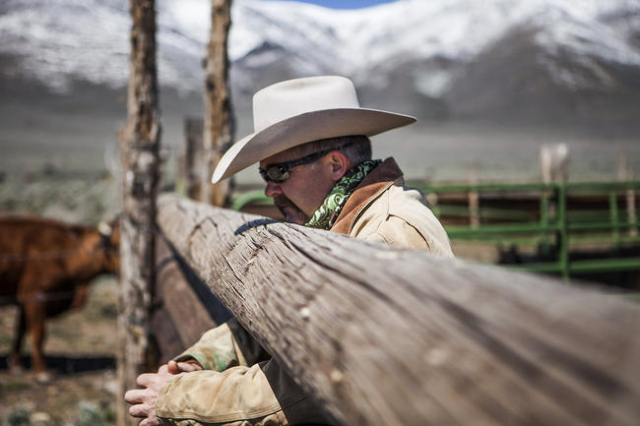Sage grouse protection is harmful, Nevada critics tell judge
RENO — Critics of public land-use plans designed to protect sage grouse told a federal judge Tuesday the regulations are having a chilling effect on rural Nevada communities.
J.J. Goicoechea, a Eureka County commissioner, rancher and appointed member of Gov. Brian Sandoval's Sagebrush Ecosystem Council, said a leaking water tank in White Pine County cannot be replaced because of uncertainty about disturbing sage grouse habitat for a right-of-way.
U.S. District Judge Miranda Du heard testimony into the evening on a motion to block implementation of the land-use regulations adopted as an alternative to listing the sage grouse under the Endangered Species Act. Du told attorneys they could submit other written materials supporting their claims after the hearing, suggesting she would rule at a later date.
Elko and Eureka counties, Western Exploration and Quantum Minerals filed the original lawsuit in September. Since then, the Nevada attorney general's office, seven other counties, Paragon Precious Metals and Ninety-six Ranch have joined the legal effort.
Three conservation groups — Earthworks, the Wilderness Society and National Wildlife Federation — have asked to intervene in the case.
Du warned the plaintiffs that to succeed, they must convince her they face the likelihood of specific, irreparable harm to put the regulations on hold pending a full trial.
Bill Whitney, Washoe County planning and development director, said two sites the Bureau of Land Management had identified for possible disposal were eyed for a new middle school and a veterans cemetery in Sparks. But he said after the new regulations came out, local officials were notified those possible land sales were on hold because they are at or near sage grouse habitat.
Government lawyers, however, said the land use plans allow land disposals to take place if it is shown they would have no adverse impact to sage grouse, and the judge noted that parcels identified for possible disposal have not been finalized.
Goicoechea said a rural landfill was identified on maps as "priority" sage grouse habitat, and ranchers fear changes to grazing permits will put them out of business despite arguments by the federal government that there will be no immediate changes to existing permits.
Goicoechea, chairman of Nevada's sagebrush council, said the state worked for four years with federal agencies to develop a plan to protect the chicken-sized bird, but many of its recommendations were ignored in land restrictions adopted by the federal government.
"We relied heavily on our federal partners," Goicoechea said. Ranchers, he said, value the bird and health of the ecosystem it depends on.
"What's good for the grouse is good for the cows," he said. Goicoechea and Barry Perryman, a rangeland ecologist and professor at the University of Nevada, Reno, said the government regulations will limit use on millions of acres of public land in Nevada and could be counterproductive to the goal of protecting sage grouse.
They testified that the government dismissed research that showed grazing can benefit the ecosystem by reducing fuels and the threat of massive wildfires.
"There is a large body of science directly related to fuels management," Perryman testified.
Grazing, he said, "if it's done in an appropriate way, it can actually be beneficial."
Contact Sandra Chereb at schereb@reviewjournal.com or 775-687-3901. Find her on Twitter: @sandrachereb

















